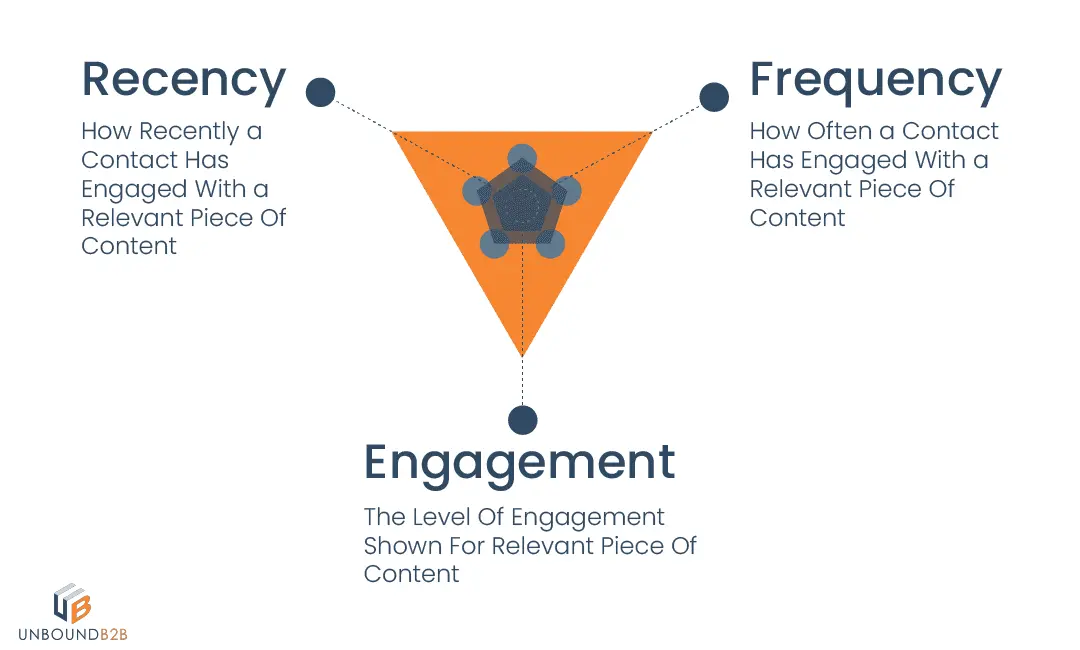
Introduction
Have you ever heard of the birthday paradox? If you place 23 people in one room, there is a 50-50 chance that two people will share a birthday. Up that number to 75, and you have a 99.9% chance of a two-person birthday match. While this may sound like heresy to the least nerdy of us, mathematicians say that the paradox, while counterintuitive, is true.
The law of probability ensures that an event is likely to occur more than we expect it to. They say that by comparing 23 birthdays against each other, you are utilizing the compounding power of exponents, giving rise to 253 comparisons. Before the rise of data-driven marketing, the marketing arena was also very probability driven.
As an illustration, the baby boomer buyer persona loves Quaker oats. The millennial however will not spend their cash on the run of the mill products such as cereal. Quaker oats for instance take up precious morning preparation minutes and are difficult to clean up. They are also not easily portable on a hectic morning.
Fortunately, the new B2C marketer does not need to invent a demographic information based persona to sell breakfast to the millennial as the baby boomer marketer did. They can use real-time data purchases and programmatic marketing to figure out what the millennial wants. Demographics and personas are just rough proxies that bring in poor outcomes when utilized to build engaging and conversion based
marketing strategies.
Enter Intent Data

Over time, B2C marketing has moved away from probability driven marketing to intent data-driven marketing. Intent data has become the Holy Grail for marketers, bringing in data from keystrokes, searches, shopping carts, and browsing behavior that make a better prediction of what the customer’s next steps on the purchase journey are. Intent data utilizes recency, frequency and engagement data to gauge intent.
Intent data will pinpoint who your responsive audience is as per their online actions and the type of information that they are engrossed in online. B2B marketing has caught up with this practice as well. B2B intent data comes from a diverse range of sources, which includes off-site activity, website, content consumption, social media, and CRM data.
Sources Of Intent Data
There are two main sources of intent data. They are;
First Party Intent Data
First-party data is also referred to as internal intent data. Marketers will harvest this data by tracking the buyer activity on a brand’s web pages. They will also analyze analytics tools for more insight. In B2B, additional first-party intent data comes from web application logs, marketing automation tools, and a business’s website backend.
Collecting internal intent data gives you the advantage of control and quick access to actionable insights. First-party data can be anonymous but you can also link it to an entity or individual via addresses in forms or IP address identification. First-party data is the gold standard of marketing data and below are some of the benefits of first-party intent data.
- This buy information flows directly from the customer or audience so it is more accurate and precise than other forms of intent data.
- These client particulars are not only useful but are continuously undergoing inclusion and refining processes as the target customers leave more purchase behavior nuances on a brand’s platforms. Internal intent data collection systems are therefore that gift that keeps on giving fresh data. This intelligence will establish information that marketers can instantly incorporate into their campaigns, without any fear of utilizing old and dry buyer information.
- The use of a first-party also secures a brand against data privacy challenges. CCPA and GDPR laws prohibit the use of third party data collected without consent. Consequently, Facebook, Twitter have put measures in place that prohibit third-party data collection. Google is also doing away with the third party cookie come 2022.
- Internal intent data is also the backbone of walled gardens, the advertising infrastructure that allows publishers to monetize their content and keep it under their control as well.
For the reasons above, increasing the quality and quantity of this class of intent data has become core to a large number of business executives. According to an Ascend2 report, 28% of marketers have intent data strategy in order.

Third-Party Intent Data
Third-party data is the more famous of the two and is also referred to as external intent data. This class of customer behavior intelligence is harnessed from sources outside your business. Some of the most popular sources of third-party intent data are cookies or IP lookups. Some of the benefits of third-party intent data include its holistic overview of buyer behavior. This data shows the evidence of a prospect’s activities across different websites and some of the critical steps that they will take in the process of making sophisticated purchase decisions.
Third-party intent data gives a clear view of the prospect’s buyer journey, highlighting their leaps, missteps, and backtracking, while internal data mostly show a few major stepping-stones on the prospect’s buyer journey.
The oftentimes unrelated bits of intelligence availed by data providers and data management platforms can help create a target profile perfect for highly converting and engaging marketing campaigns. These bits of data are similar to puzzle pieces that when together enrich first-party data for single or multi-channel campaigns.
With third party intent info by your side, you can market to a wider audience and bring in new prospects that show buyer intent to a partner or competitor brand. One major challenge that hampers the use of external data is the question of its integrity.
There are often inaccuracies in third party data as marketers pursue quantity over quality. You, therefore, have to ensure that your third-party data provider is well incentivized to provide filler-free data insights. This will prevent investment wastage.
Besides, third party intent is not a silver bullet for all your B2B marketing challenges. Have measurable campaign goals in mind when utilizing external data.
What is Your Buyer’s Intent Data?
Almost 87% of B2B companies fail to unlock their buyer intent data. That’s not because they don’t know how vital buyer intent data is. It is just that they don’t know what their buyer intent data is.
It is not easy to define your buyer’s intent data. You first have to determine which buyer is important to your business and set a score to rank each of your potential accounts.
You also need information on your accounts to know how they engage with your brand, how long they engage, etc.
You must track a million of your potential B2B buyer’s signals and find patterns in the tracked data for that purpose. Here are the critical signals that you can track on B2B decision-makers:
Recency
Recency is a critical factor while determining your buyer intent data. For example, knowing how recently an account engaged with your business content can help you chase them on time.
There is no purpose in following up with an account that subscribed to your newsletter two months back. There is a huge possibility that the person has already made a purchase decision or has dropped the purchase idea.
You can nurture your potential clients by considering recency before they turn cold.
Frequency
Frequency can help you evaluate the needs of your potential buyer. For example, if a person frequently visits the pricing page on your website, it shows that they are interested in your solutions, but something is stopping them from making a decision.
In that case, you can try a price drop or offer a special discount to that account to convert faster.
Engagement
Engagement is a crucial scoring factor. It can help you understand how interested a lead is in your services.
For example, when you find a lead engaging with your content on social media frequently, it is the right time to connect with that account and hard sell your services.
You can use as many or as few factors to define your potential buyer’s data. But, the more factors you use to create your intent data, the better results you will receive.
Here you can use your content to collect data from your potential customers. For example, you can track your visitor’s behaviors on your website to understand what type of content they like more.
How to Use Intent Data?
B2B marketers utilize intent data uniquely from B2C marketing. The final purchase decision in B2B is a product of many other smaller decisions and influences from the wider purchase chain. Consequently, B2B intent data will help to carve up individual and company roles in purchases from multiple data sources.
Here are some common ways to use your B2B intent data for higher sales and revenue:
Find qualified leads
Not every lead that lands on your pipeline is qualified to convert. Some leads require more work before turning into potential customers.
Therefore, 61% of marketers consider lead generation the most difficult marketing operation. However, intent data can help you find qualified leads from large data silos.
Your B2B intent data provider can only share information about accounts that are relevant to your business. For example, they will not tell you how ready those accounts are.
You must analyze your intent database and use a lead-scoring system to detect potential and non-potential accounts. Then, you can segment your B2B intent data into separate groups.
For example, you can create three groups — hot accounts, medium accounts, and cold accounts. In addition, it can help you create marketing strategies to convert all your potential accounts.
Targeted marketing and sales
You can use buyer intent data to target in-market prospects and convert them into quality leads. Quality intent data can reveal information about a prospect’s past research, including specific companies and products.
Marketers can use the data to shape marketing messaging and stay ahead of the competition. According to Gartner, more than 70% of B2B marketers will use third-party intent data to target prospects by 2022.
Due to the limited prospect information, initial sales and marketing outreach frequently includes generic marketing tactics and product information in their message.
Fortunately, buyer intent signals assist teams in determining where buyers are in their purchasing journey, allowing them to adapt targeted marketing messaging and sales pitches to better align with the specific signs buyers leave across third-party sites.
Lower churn rate
Keep using the buyer intent data after prospects become clients. Monitor intent signals to identify clients who are looking for alternatives or competitors.
This information most likely indicates who may require additional attention or assistance. When customers look for additional solutions on third-party websites, it is possible that your product failed to meet a specific need.
So, set up triggers to ask clients for feedback to identify gaps, guide future product development, and reduce churn.
How Can You Benefit from Intent Data?

Cultivating Top-Notch Lead Prioritization Strategies By Ranking Your Leads Into Tiers
These tiers are segmented as per their potential. Data shows that conversion is one of the biggest challenges that marketers face.

Intent data can segregate the prospective client from the low potential leads as long as it is drawn from multiple sources of external and internal intent data. A single source of intent data will give you a myopic view of the lead funnel, and it could lead to targeting errors.
It can help marketers to only invest in the marketing channels that offer higher returns. It can make your marketing strategy more impactful.
Boosts Engagement With a Data-Driven Marketing Campaign
Over 91% of B2B brands use content marketing in their outreach campaigns. Intent data can infuse your storytelling with hot topics taking the guesswork out of content creation. This customer will not only forecast buyer intent but also highlight where the prospect will be in your conversion at a given time. This information can help marketers to design marketing automation sequences that will keep the audience further engaged.
Accelerates The Conversion of Leads To Sales Qualified Leads (SQL)
One critical step in marketing is the conversion of marketing qualified leads (MQL) to SQLs. Intent data can help marketers engage with high-quality leads that are also purchase ready. By utilizing integrated multi-source intent data your content and engagement strategy will target the MQLs that are at the perfect purchase point in their buyer journey. This data will highlight spikes in intent activity, which will in turn signal a targeted outreach.
Best B2B Intent Data Providers
As mentioned above, B2B marketers can use first and third-party data to implement intent-based marketing campaigns. The source of your first-party intent data is your internal database, like CRM tools.
But, third-party data is only available for a bit. You have to track your targeted audience across several channels to collect it. This process is time-consuming and expensive.
Thus, many B2B businesses purchase intent data from third-party B2B data providers. It can save them time and get qualified data at cheaper rates.
Here are the leading B2B intent data providers:
1. UnboundB2B
UnboundB2B has a large and fresh B2B contact base. We have over 60 million B2B contacts targeting various departments by roles and technologies.
Our intent-based targeting covers 15,000 products to generate qualified leads. Besides this, we frequently upgrade and update our audience base to offer the best services to our clients.
2. Bombora
Bombora has been a leading B2B data provider for the past 6 years. They have a comprehensive database for both sales and marketing purposes. It enables businesses to create targeted marketing and sales messages.
3. ZoomInfo
ZoomInfo has excellent user ratings. It doesn’t only offer B2B contacts. But it can also help you with
lead generation, email building, live chat, and other marketing features.
But, the problem is that it is a bit more pricey than other intent data software and service providers.
Conclusion
Intent data is the new frontier in B2B marketing. Every marketer searching for an edge needs to gauge their prospect’s intent. Understanding the customer’s triggers and behavior will help you understand their needs without playing roulette with probability-based marketing.
This data will help craft personalized profiles for personalized advertising, increasing the chance of a sale and more ROI for your brand. Leverage intent data and watch its benefits grow your business.
For quality B2B intent data, you can always contact our team. We can provide you with the best B2B contacts, suiting your business needs. Our team can also help you build a B2B buyer persona, lead generation, and more.
Our blog
Latest blog posts
Tool and strategies modern teams need to help their companies grow.

Personalization functions as the vital foundation for executing B2B marketing effecti...

Beat your competitors and exceed your revenue goals this year by shifting your focus ...

SaaS growth has never been more challenging. SaaS companies must move faster and smar...





